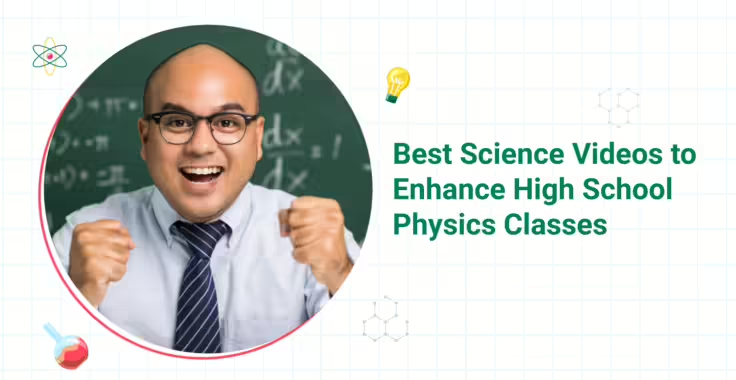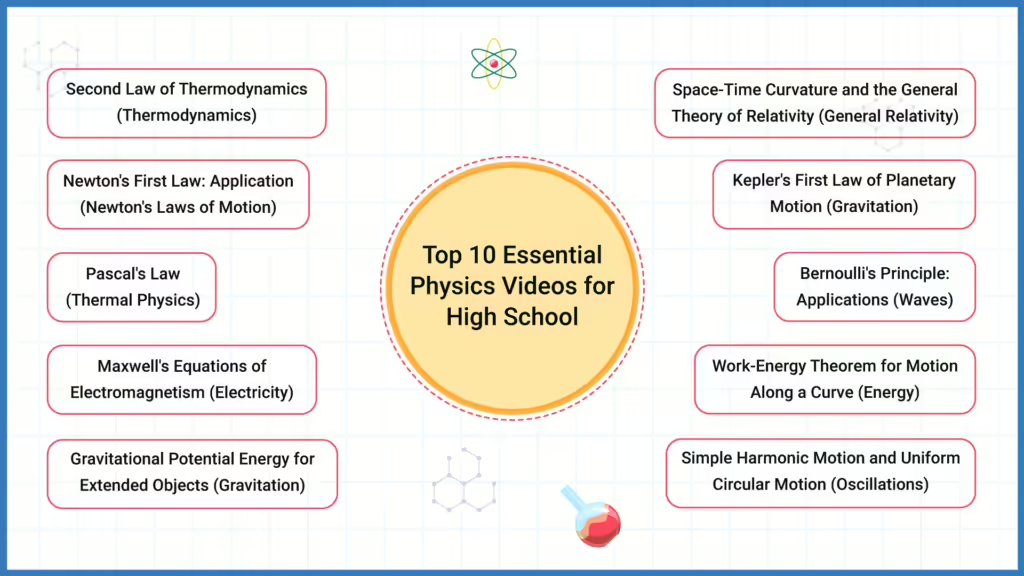
Essential Science Videos Every High School Physics Teacher Needs
In today’s fast-paced educational landscape, visual learning has become a crucial tool in helping students grasp complex physics concepts. The integration of high-quality, peer-reviewed science videos, like those from JoVE, provides clear and concise explanations that align with educational standards. These videos make abstract theories accessible and engaging for high school students, helping teachers enhance their physics curricula.
Why are Science Videos Crucial for Learning Physics?
The use of science videos in physics education has proven to significantly boost student engagement and comprehension. By visualizing complex theories and principles, students are better able to understand and retain information. Videos specifically tailored for physics education simplify difficult topics, from Newton’s Laws of Motion to Maxwell’s Equations, and provide real-world applications that bring theoretical concepts to life. Whether it’s science physics videos on mechanics or electromagnetism, visual learning can deepen student understanding, particularly when dealing with abstract concepts.
Top 10 Essential Physics Videos for High School
Here’s a curated list of the most impactful science physics videos for high school students, covering foundational to advanced topics. These videos align with high school curricula, making them engaging and educational for students.

1- Second Law of Thermodynamics (Thermodynamics)
The Second Law of Thermodynamics states that the total entropy of an isolated system can never decrease over time. This law explains why certain processes occur spontaneously in nature and is essential for understanding energy transfer and efficiency in systems.
Example Video Topic: Videos on this topic might cover how energy disperses in various systems, explaining the concept of entropy and how it governs natural processes.
2-Newton's First Law: Application (Newton's Laws of Motion)
Newton’s First Law of Motion, also known as the law of inertia, states that an object at rest will stay at rest and an object in motion will stay in motion unless acted upon by an external force. This law forms the foundation for understanding motion and is critical for grasping basic mechanics.
Example Video Topic: Videos can demonstrate everyday applications of inertia, such as how seatbelts work during sudden stops in cars.
3-Pascal's Law (Thermal Physics)
Pascal’s Law states that a change in pressure applied to an enclosed fluid is transmitted undiminished to all portions of the fluid and to the walls of its container. This principle is fundamental in understanding hydraulics and fluid dynamics.
Example Video Topic: Videos might demonstrate hydraulic systems in action, showing how pressure is distributed uniformly throughout a fluid.
4- Maxwell's Equations of Electromagnetism (Electricity)
Maxwell’s Equations describe the fundamental principles governing electricity and magnetism. They provide a comprehensive framework for understanding electromagnetic fields and their interactions.
Example Video Topic: Videos on this topic simplify complex interactions between electric and magnetic fields, such as how electromagnetic waves propagate through space.
5-Gravitational Potential Energy for Extended Objects (Gravitation)
Gravitational potential energy is the energy stored in an object due to its position in a gravitational field. This concept becomes more complex when applied to extended objects rather than point masses.
Example Video Topic: Videos can explore how gravitational energy changes when dealing with large objects, such as planets or extended physical bodies.
6-Space-Time Curvature and the General Theory of Relativity (General Relativity)
Einstein’s General Theory of Relativity revolutionized our understanding of gravity by describing it as the curvature of space-time. This theory provides the modern framework for understanding gravitational phenomena.
Example Video Topic: Videos introduce the concept of space-time curvature and how massive objects like planets and stars affect the geometry of space around them.
7-Kepler's First Law of Planetary Motion (Gravitation)
Kepler’s First Law states that planets move in elliptical orbits with the Sun at one focus. This law is fundamental for understanding celestial mechanics and planetary orbits.
Example Video Topic: Videos can demonstrate the elliptical nature of planetary orbits and explain how gravitational forces maintain these orbits.
8-Bernoulli's Principle: Applications (Waves)
Bernoulli’s Principle explains how the speed of a fluid affects its pressure. This principle has practical applications in aerodynamics and fluid mechanics, such as explaining lift in airplanes.
Example Video Topic: Videos on this topic provide real-world examples of Bernoulli’s Principle in action, such as airflow over wings and fluid flow through pipes.
9-Work-Energy Theorem for Motion Along a Curve (Energy)
The work-energy theorem states that the work done on an object is equal to the change in its kinetic energy. This theorem is particularly useful in understanding motion along curves, where both kinetic and potential energies are involved.
Example Video Topic: Videos help students visualize how energy is conserved and transformed as objects move along curved paths.
10-Simple Harmonic Motion and Uniform Circular Motion (Oscillations)
Simple Harmonic Motion (SHM) is a type of periodic motion where the restoring force is proportional to the displacement. Uniform Circular Motion is related to SHM as the projection of circular motion can create oscillatory patterns.
Example Video Topic: Videos connect the dots between oscillatory and circular motion, helping students understand the dynamics of oscillations and rotations.
Creating Interactive Playlists and Quizzes with Physics Videos
High school physics teachers can significantly enhance their classes by using JoVE’s customizable video playlists and interactive quizzes. These tools allow educators to create personalized learning paths for their students, offering engaging, tailored content. The quizzes provide immediate feedback, helping students assess their understanding and encouraging active participation.
Conclusion: Leveraging Top Science Videos for Impactful Physics Education
Incorporating curated, high-quality science videos into high school physics classes can transform how students learn and engage with complex concepts. Educators are encouraged to explore the recommended videos and utilize JoVE’s resources, such as video playlists and quizzes, to maximize student engagement and deepen their understanding of the subject. By using science physics videos, teachers can ensure that their students not only meet educational standards but also develop a passion for learning physics.
Why wait? Sign up for JoVE today to access thousands of science videos, lab simulations, and more. Enhance your teaching and give your students the dynamic learning experiences they need to thrive in today’s world.
Start now for free and access 20 JoVE science videos to see how they can transform your classroom!